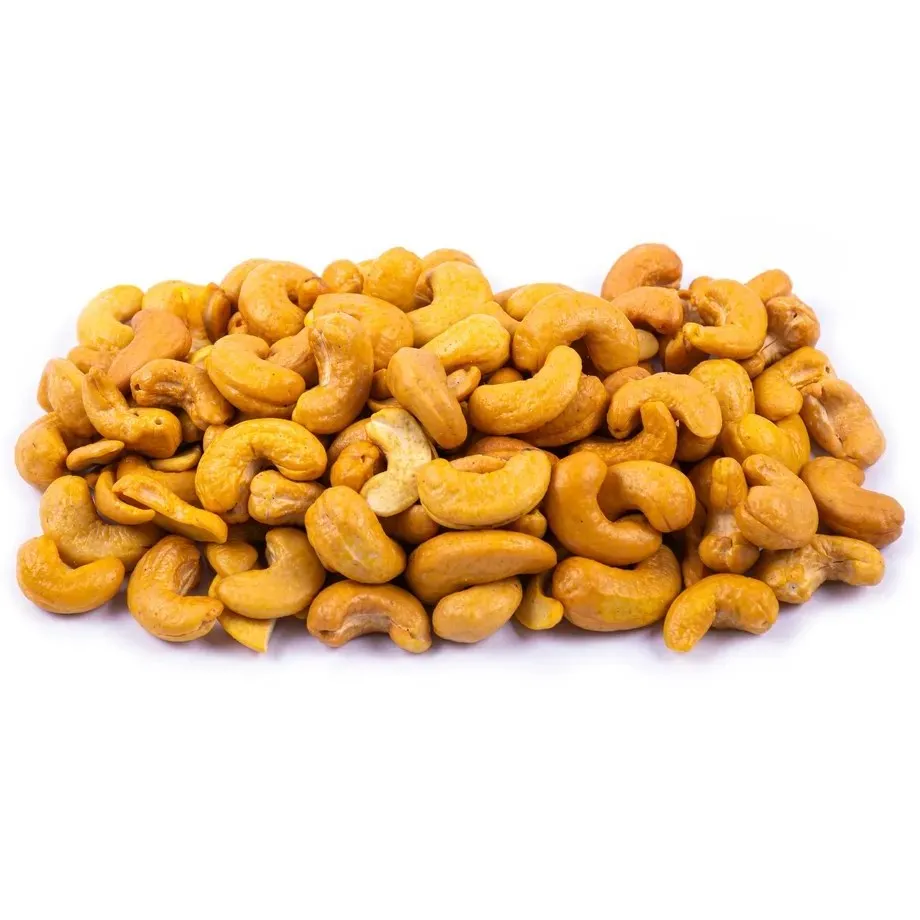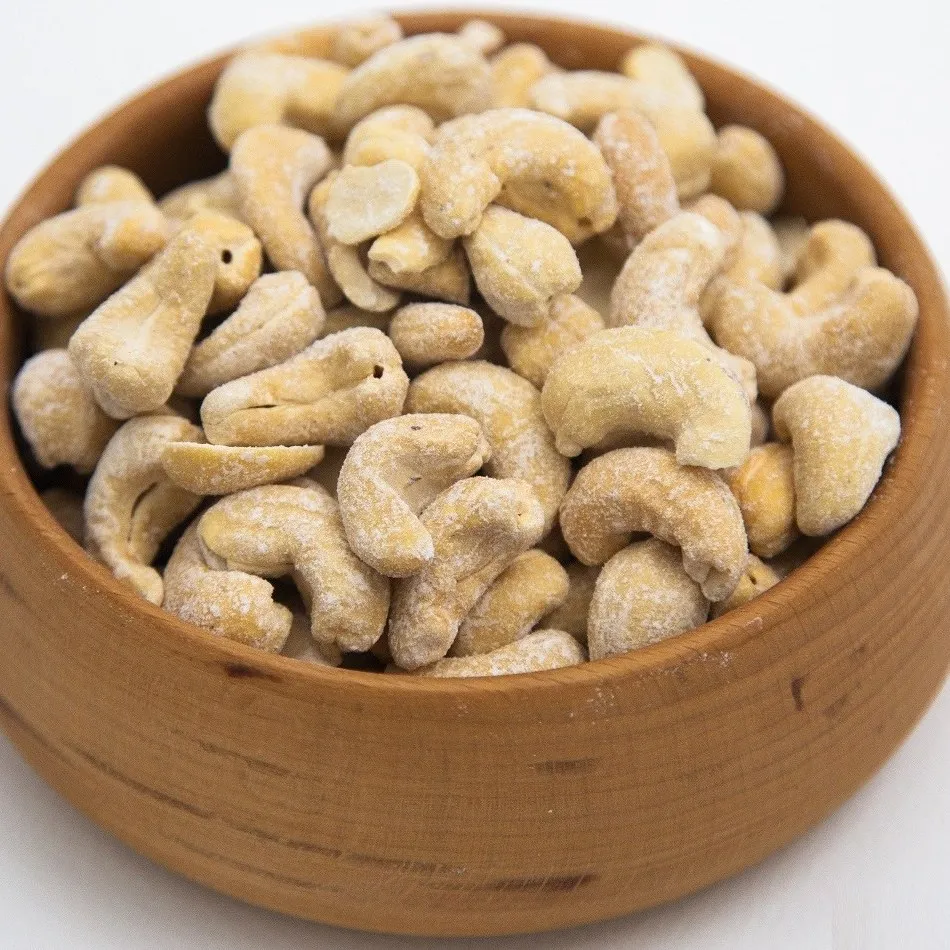The origin of the cashew nut can be traced back to Northeastern Brazil, where it first grew wild. The cashew tree, known scientifically as Anacardium occidentale, is native to the coastal areas of Brazil and was later introduced to other parts of the world through colonization and trade.
The cashew tree is a tropical evergreen tree that can reach a height of up to 12 meters. It is characterized by its large, leathery leaves and pear-shaped fruit called the cashew apple. The cashew apple is not a true fruit, but rather a swollen stem known as a pseudofruit. It is yellow or red in color and has a sweet flavor. However, it is the cashew nut, found attached to the bottom of the cashew apple, that is of commercial value.
The cashew nut itself is enclosed in a hard shell, which contains an irritant oil called urushiol. This oil is a skin allergen and can cause severe skin reactions in some individuals. Therefore, great care must be taken when handling the cashew nut shell to prevent any contact with the oil.
Historically, the cashew tree played an important role in the indigenous communities of Brazil. The Tupi-Guarani people, native to Brazil, considered the cashew tree to be a sacred tree that provided them with sustenance and medicinal resources. They used the cashew apple to make juice and a type of wine, while the cashew nut was ground into flour and used as a food source.
It wasn’t until the 16th century that the Portuguese explorers, led by Vasco da Gama, encountered the cashew tree during their voyages to Brazil. They were introduced to the cashew nut and cashew apple by the indigenous people, who served it to the explorers as a delicacy.
The Portuguese were intrigued by the cashew tree and its various uses, and they soon began cultivating the tree in their colonies in Brazil. This marked the beginning of cashew production on a larger scale. The Portuguese also introduced the cashew tree to their colonies in other parts of the world, such as Mozambique, Goa (India), Angola, and Cape Verde.
In these new regions, the cashew tree thrived and adapted to the local climate and conditions. The cultivation of cashew trees in these regions provided an additional source of income for the colonizers and contributed to the economic development of these areas. Cashew plantations were established, and cashew nuts became an important export commodity.
Over time, the popularity of cashew nuts spread to other parts of the world. In the 19th century, the English and the Dutch began cultivating cashew trees in their own colonies in Africa, Asia, and the Caribbean. These new regions offered suitable climatic conditions for cashew cultivation.

Today, the leading producers of cashew nuts are countries such as Vietnam, India, Nigeria, Ivory Coast, and Brazil. Vietnam, in particular, has emerged as the largest exporter of cashew nuts in the world, surpassing traditional producers like India and Nigeria.
The global demand for cashew nuts has steadily grown over the years, primarily driven by the increasing popularity of healthy snacking options and the rise of plant-based diets. Cashew nuts are not only consumed as a snack, but they are also used in various culinary applications, such as in baking, cooking, and as a dairy alternative.
In addition to their culinary uses, cashew nuts are also valued for their nutritional content. They are a rich source of healthy fats, protein, vitamins, and minerals. Cashews are particularly high in monounsaturated fats, which are known to be heart-healthy and beneficial for overall health.
In conclusion, the origin of the cashew nut can be traced back to Northeastern Brazil, where it grew wild. It was introduced to other parts of the world through colonization and trade, and today, cashew nuts are produced and consumed globally. The cashew tree has not only provided sustenance and economic opportunities to communities around the world but has also become a popular and nutritious snack enjoyed by millions.The Cashew Nut Industry: A Lucrative Business Venture
Introduction:
The cashew nut industry has experienced significant growth worldwide, driven by increasing consumer demand, health consciousness, and the versatility of cashew nuts in culinary applications. This article explores the various aspects of the cashew nut industry, including production, processing, trade, and future trends. It also highlights the potential business opportunities and challenges within the industry.
1. Production of Cashew Nuts:
Cashew nuts are primarily cultivated in tropical regions, with Vietnam, India, Nigeria, Ivory Coast, and Brazil being the leading producers. These countries offer favorable climatic conditions for cashew tree cultivation, including moderate temperatures, ample rainfall, and well-drained soils. Cashew trees take about 3 to 5 years to reach maturity and start producing nuts.
2. Processing and Value Addition:

After harvesting, cashew nuts go through a series of processing steps to remove the hard outer shell and the toxic oil. The processing involves shelling, drying, and roasting the nuts. Value addition is an important aspect of the cashew nut industry, as it allows for the production of a wide range of products such as whole cashew nuts, cashew kernels, cashew butter, cashew milk, and cashew flour.
3. International Trade and Market Trends:
The cashew nut industry is a global market, with trade occurring on a large scale. Vietnam is the leading exporter of cashew nuts, followed by countries like India and Nigeria. The United States, Europe, and Asia are major importers, with the demand for cashew nuts continuing to rise. Market trends indicate a growing preference for organic and sustainably sourced cashew nuts, as consumers become more conscious about ethical and environmental considerations.
4. Health Benefits and Culinary Uses:
Cashew nuts are not only delicious but also offer several health benefits. They are rich in healthy fats, proteins, vitamins, and minerals. Cashews have been associated with improved heart health, weight management, and reduced risk of chronic diseases. In the culinary world, cashew nuts are used in various dishes, including stir-fries, salads, desserts, and vegan alternatives such as cashew cheese and cashew milk.
5. Business Opportunities in the Cashew Nut Industry:
The cashew nut industry offers a range of business opportunities for entrepreneurs and investors. These opportunities include cashew nut farming and cultivation, processing and value addition, exporting, wholesaling, and retailing. With the increasing global demand for cashew nuts, entering the industry can be a lucrative venture, especially in regions with suitable climate conditions.
6. Challenges in the Cashew Nut Industry:
While the cashew nut industry presents promising prospects, it also faces certain challenges. One challenge is the price volatility of cashew nuts, which can be influenced by factors such as weather conditions, currency fluctuations, and supply and demand dynamics. Another challenge is the threat of pests and diseases that can affect cashew tree productivity. Additionally, maintaining quality standards, ensuring food safety, and complying with regulations can pose challenges for businesses operating in the industry.

7. Sustainability and Ethical Considerations:
The cashew nut industry is increasingly focusing on sustainability and ethical practices. This includes promoting responsible farming methods, conserving natural resources, supporting fair trade principles, and ensuring the welfare of farmers and workers in the supply chain. Adopting sustainable practices not only benefits the environment but also enhances the reputation and marketability of cashew nut businesses.
8. Technological Advancements in Processing:
Technological advancements have significantly influenced the processing and value addition in the cashew nut industry. Automated shelling and sorting machines have improved efficiency and reduced labor costs. Additionally, innovations in processing techniques have led to the development of new cashew-based products, catering to evolving consumer preferences.
9. The Rise of Cashew Nut Byproducts:
In recent years, there has been a growing interest in utilizing cashew nut byproducts effectively. The cashew apple, although often discarded, can be used to make juices, preserves, and alcoholic beverages. Cashew nut shells can be processed into biofuel, charcoal, or used in the production of industrial materials. Exploring these byproducts can create additional revenue streams and contribute to sustainable business practices.
10. Future Trends in the Industry:
Looking ahead, the cashew nut industry is expected to experience continued growth and diversification. Increasing consumer awareness of the health benefits of cashews, along with the rising popularity of plant-based diets, will likely drive demand in the coming years. Additionally, advancements in technology, sustainable practices, and innovative product development are expected to shape the industry’s future.
Conclusion:

The cashew nut industry offers lucrative business opportunities, driven by increasing global demand and the versatility of cashew nuts for culinary and health-conscious consumers. However, businesses operating in the industry must navigate challenges such as price volatility, quality control, and sustainability considerations. Technological advancements and the utilization of cashew nut byproducts present opportunities for innovation and diversification. As the industry continues to grow, it is crucial for businesses to stay informed about market trends and consumer preferences to capitalize on emerging opportunities.










